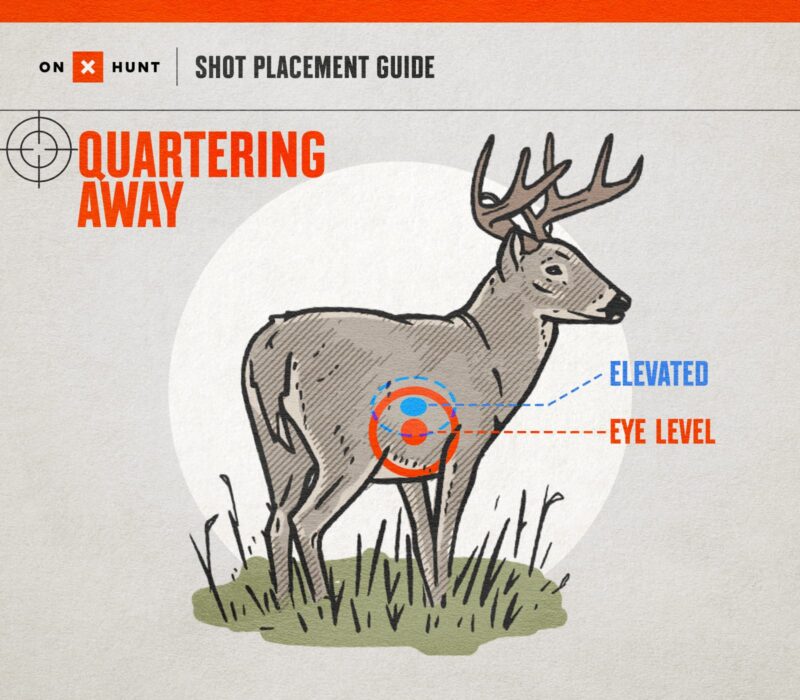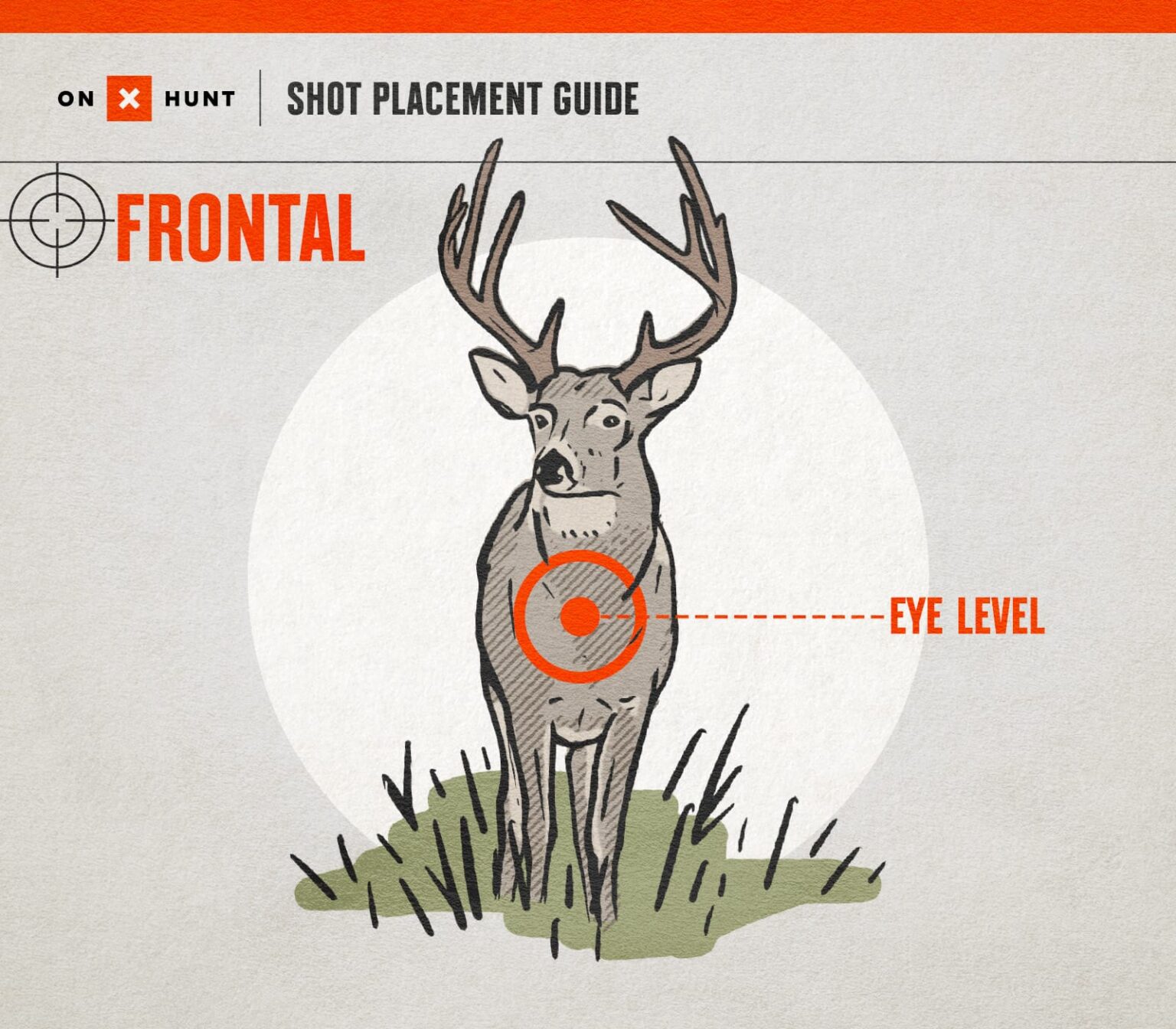Hunting: Shot Angle Secrets & What NOT To Do!
Do you know the crucial link between a hunter's success and the ethical responsibility they bear? The seemingly simple act of choosing a shot angle has profound implications, dictating not only the likelihood of a successful hunt but also the welfare of the animal itself.
In the world of hunting, precision is paramount. It's a dance between skill, knowledge, and respect for the quarry. Ethical hunting dictates a commitment to a swift and humane kill. This commitment is not merely about bagging an animal; it's about minimizing suffering and ensuring the hunt is conducted with integrity. The selection of the right shot angle is a cornerstone of this ethical practice.
Let's dissect the nuances of shot angles and their impact. A well-placed shot is a testament to a hunter's understanding of animal anatomy and their commitment to ethical hunting. Conversely, a poor shot can lead to prolonged suffering for the animal, wasted meat, and a diminished experience for the hunter. The goal is to achieve a clean kill, swiftly and humanely.
The question then becomes: what shot angles should be prioritized, and which ones should be avoided at all costs? We will explore these questions in depth, providing a comprehensive understanding of shot angles and their impact on a hunt. This information will equip the reader with the knowledge to make informed decisions, ensuring they are successful and ethical.
The choice of shot angle is not a matter of luck; it is a strategic decision. A hunter must consider various factors, including the animal's position, the terrain, and the range. Understanding the implications of each angle is crucial to making an informed decision.
| Shot Angle | Effect on Kill | Impact on Meat | Animal Detection | Ethical Considerations |
|---|---|---|---|---|
| Broadside | High probability of clean kill, strikes vital organs | Minimal meat damage | Moderate detection risk | Ethically sound, maximizes humane kill |
| Quartering-Away | Good chance of vital organ strike, bullet may exit rear | Moderate meat damage | Moderate detection risk | Generally ethical, assess exit trajectory |
| Quartering-Towards | Can be challenging; potential for long bullet path | Potentially high meat damage | Higher detection risk | Requires careful assessment; may not be ethically sound due to risk of prolonged suffering |
| Frontal | Difficult; vital organs protected by chest cavity | Moderate to high meat damage | High detection risk | Generally unethical; very high risk of crippling the animal |
| Rear (Texas Heart Shot) | Extremely low chance of clean kill, misses vital organs | Extensive meat damage | Lowest detection risk, but... | Highly unethical; guaranteed suffering and poor kill. |
The broadside shot is generally considered the most desirable. Presenting the largest target profile, it offers the greatest opportunity to hit vital organs such as the heart and lungs. This angle creates the shortest path to these crucial areas, enhancing the likelihood of a quick and humane kill. It also minimizes meat damage, which is a consideration for those who value the harvest.
The quartering-away shot offers another viable option. The angle allows the bullet to pass through the animal's body, often exiting on the opposite side. While meat damage might be slightly higher than with a broadside shot, the chance of hitting vital organs remains relatively good. The hunter must carefully assess the angle and potential exit trajectory to ensure a clean kill.
Quartering-towards shots, however, introduce more complexity. The path of the bullet may be longer, increasing the risk of the bullet striking non-vital areas. This can result in the animal running off and suffering, as well as significant meat damage. Ethical considerations should be paramount in this situation. A hunter should carefully consider whether taking the shot is the right choice.
Frontal shots are generally discouraged. The animal's chest cavity, with its protective ribcage, protects vital organs. The chance of hitting the heart or lungs is reduced, and the bullet path may be unpredictable. The animal will most likely detect movement when taking the shot. Furthermore, the shot can lead to increased meat damage. It is vital to practice ethical hunting by not taking this shot.
And then there is the rear shot, often referred to as the "Texas Heart Shot." It's the least desirable. This angle offers an extremely low chance of hitting vital organs. Moreover, the potential for meat damage is exceedingly high, as is the risk of the animal escaping and suffering a slow, agonizing death. Taking this shot is inherently unethical. Such shots should be avoided at all costs. It is a violation of hunting ethics.
Achieving a clean and ethical kill requires precise shot placement. It goes hand-in-hand with responsible hunting. It involves understanding animal anatomy and behavior, as well as honing marksmanship skills. Hunters who prioritize ethical hunting are committed to minimizing suffering and respecting their quarry. They are more likely to make informed decisions about shot angles, ultimately leading to a more fulfilling and responsible hunting experience.
The importance of shot angle and its impact on lethality can not be overstated. Ethical hunting necessitates a commitment to humane practices. It involves taking all reasonable steps to ensure the animal's death is as swift and painless as possible. Hunters must continually evaluate their skills, knowledge, and equipment to uphold these standards.
The choice of ammunition is also a critical factor. Correct ammo type and size. The bullet must have the proper penetration to reach vital organs. Hunters should research the most appropriate ammunition for their chosen firearm and the type of animal they are hunting. This aspect is essential to the pursuit of a humane kill.
The method of firing, whether from a rifle or handgun, does not change the principles. The same ethical considerations about shot angles and ammunition apply. Hunters should practice with their chosen firearm to become proficient at various distances. Practice improves accuracy and shot placement.
The mechanics of how a cartridge is fired, and how the rifle and handgun fire, are important. A well-maintained firearm functions reliably. A thorough understanding of ballistics, and how a bullet travels from the barrel to its target, enhances the hunter's ability to make informed decisions about shot placement.
In the realm of ethical hunting, success is not solely defined by the harvest. It's a combination of skill, knowledge, and respect for the natural world. The focus on ethical hunting goes beyond the hunt itself. The commitment to responsible hunting practices creates a better experience.
The hunter who practices this is a conservationist, contributing to the sustainable management of wildlife populations and their habitats. By choosing ethical practices, hunters promote a deeper appreciation for the environment. Ethical hunting upholds the tradition of hunting and its place in the broader ecosystem.
In the world of hunting, the selection of the proper shot angle is one of the most important aspects. The implications of each angle are clear, and the ethical responsibility that hunters bear is significant. The quest for a clean, humane kill should be the top priority for every hunter. By prioritizing ethical conduct, hunters can help protect the natural world for generations.
The ethical hunter understands that their actions directly impact the animal's welfare. Ethical hunting creates opportunities for conservation and responsible land stewardship.
Hunters should be prepared to deal with the consequences of their decisions. It's up to the individual to make the responsible decisions required for ethical hunting.
Ultimately, the choice of which shot angle to take is a personal one, but it is a choice with profound implications. By understanding the nuances of shot angles and the importance of ethical hunting practices, hunters can ensure a more responsible and fulfilling experience in the field.
Aim at the center of the chest to hit the vital organs. Broadside shots maximize the chance of hitting vital organs. A successful and ethical hunting trip will allow hunters to harvest their quarry while respecting the animals they hunt and the environment.


